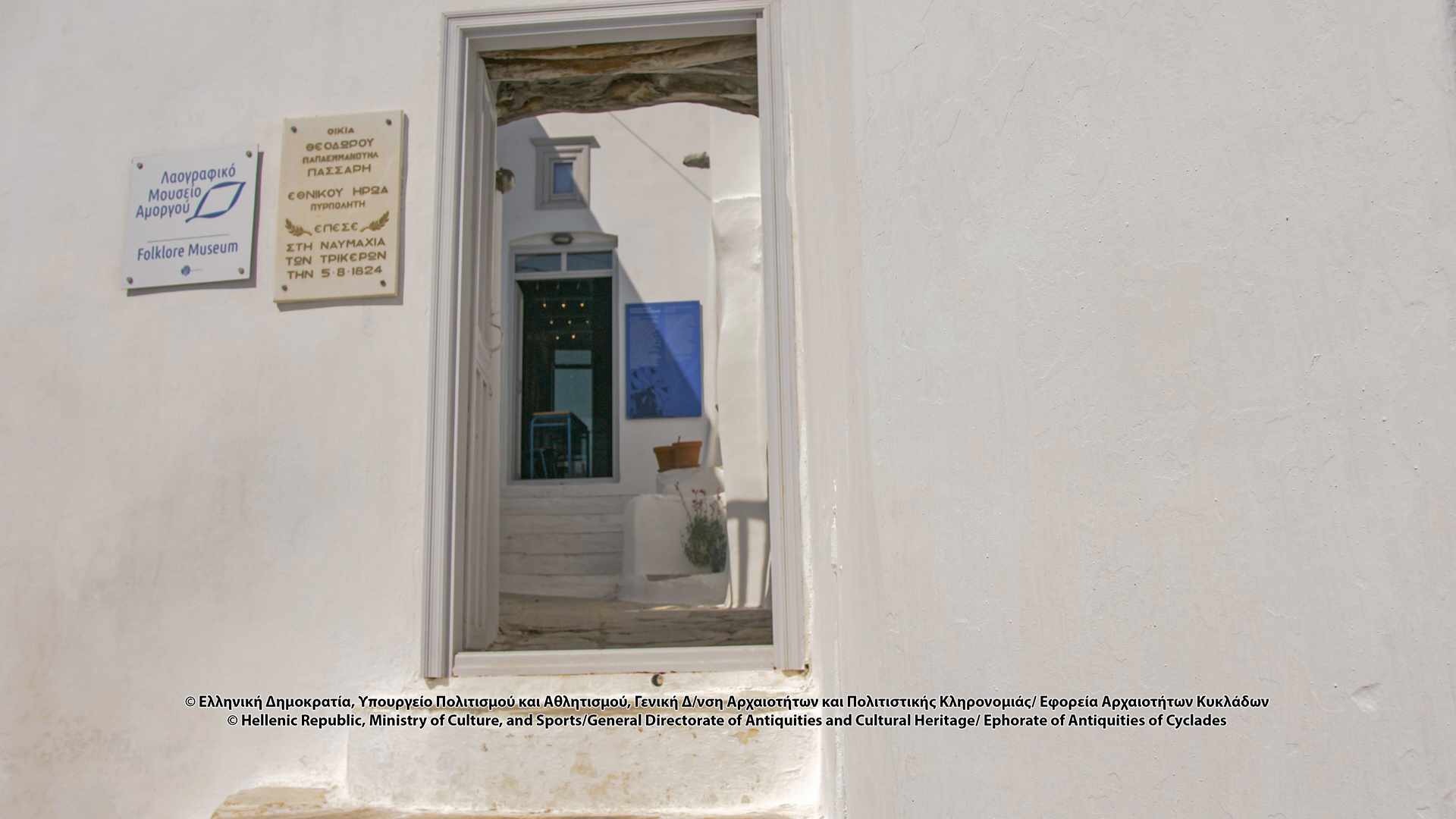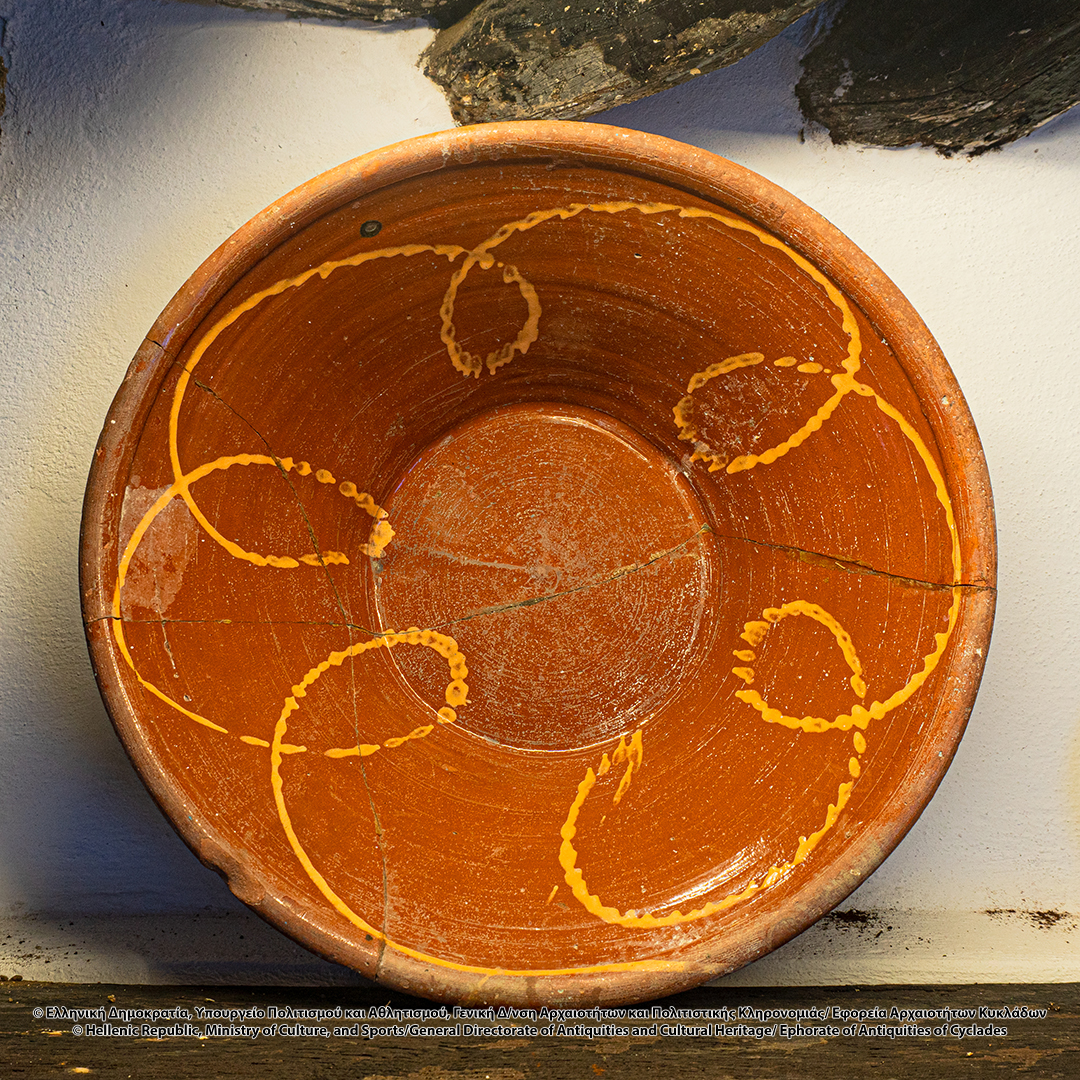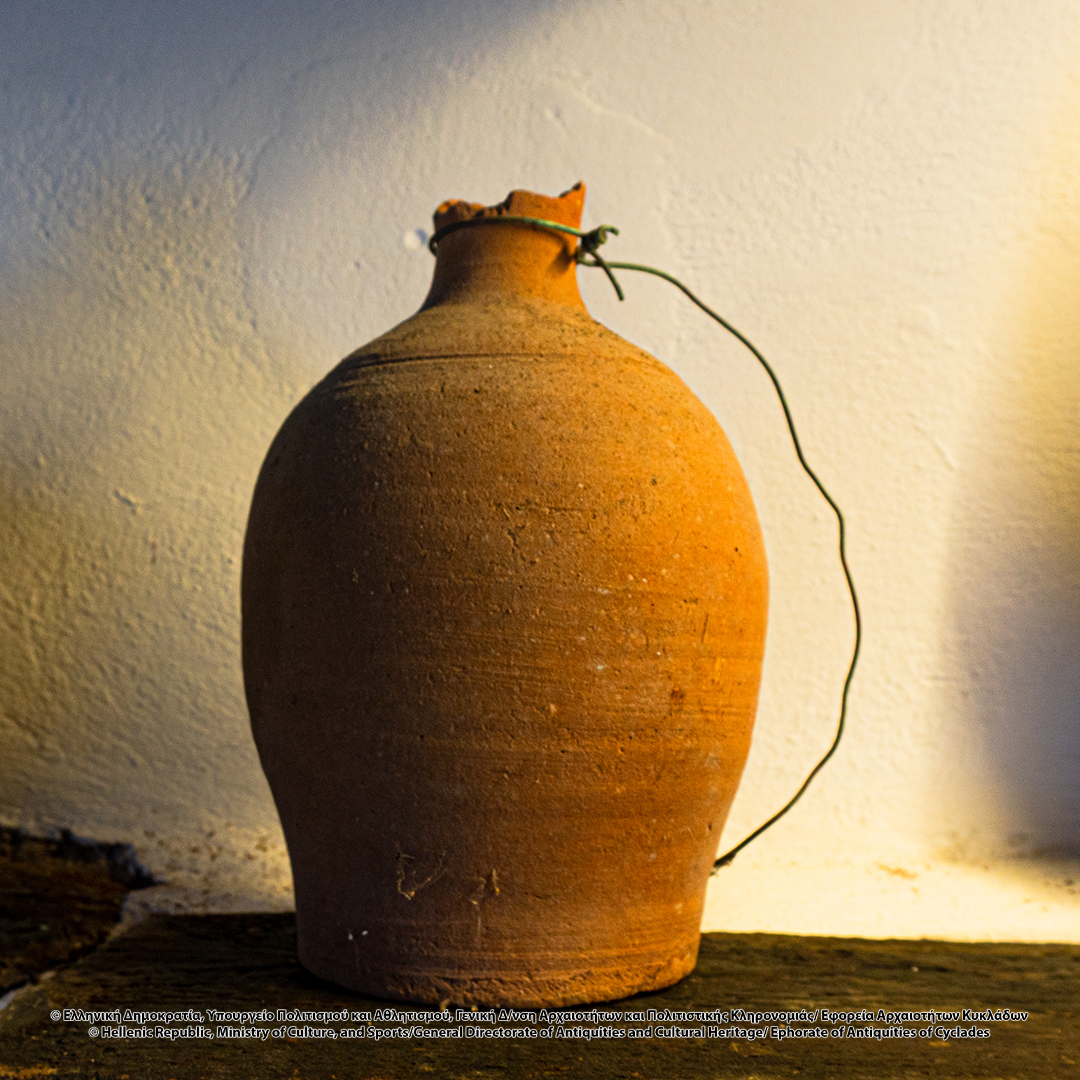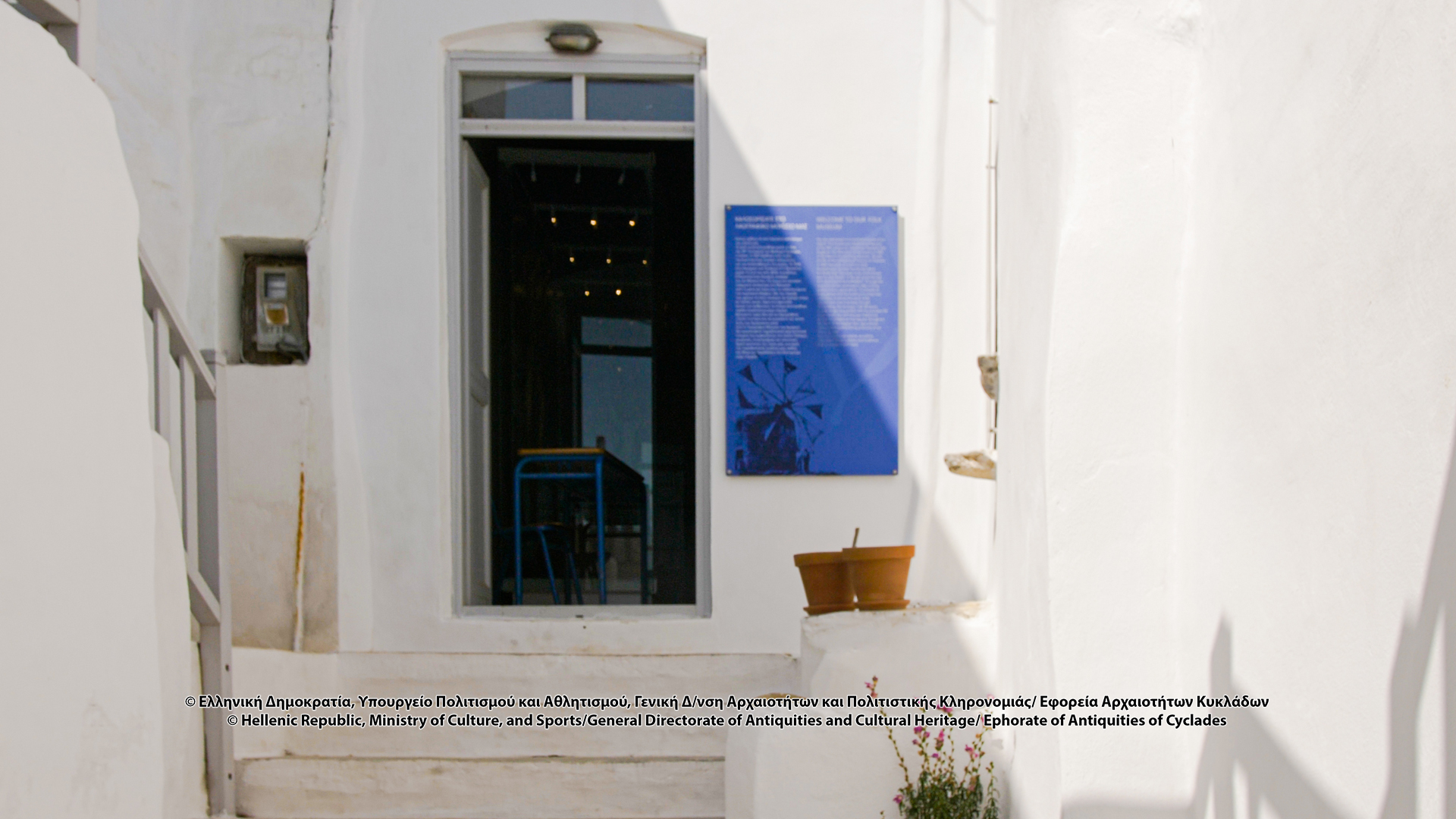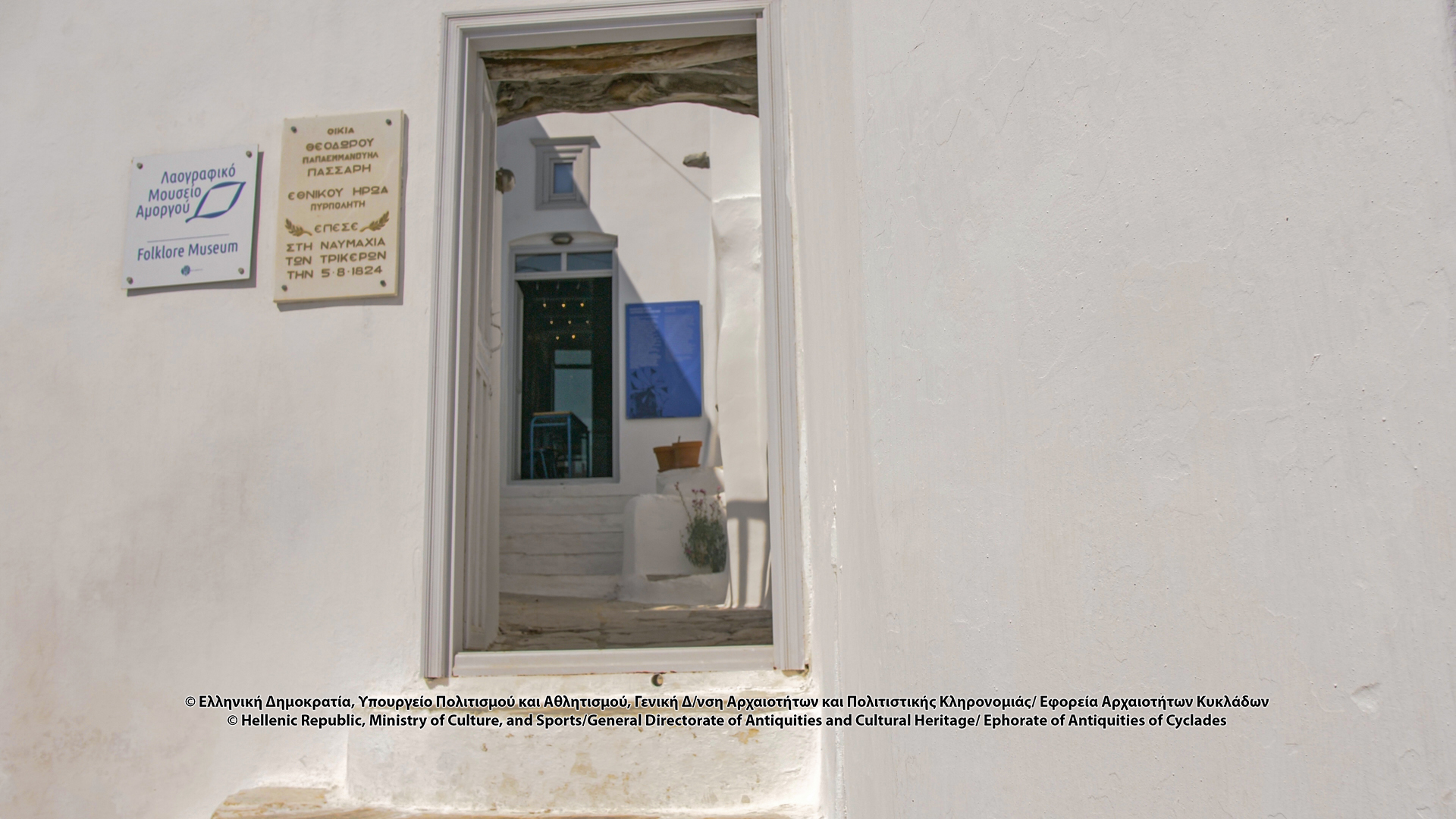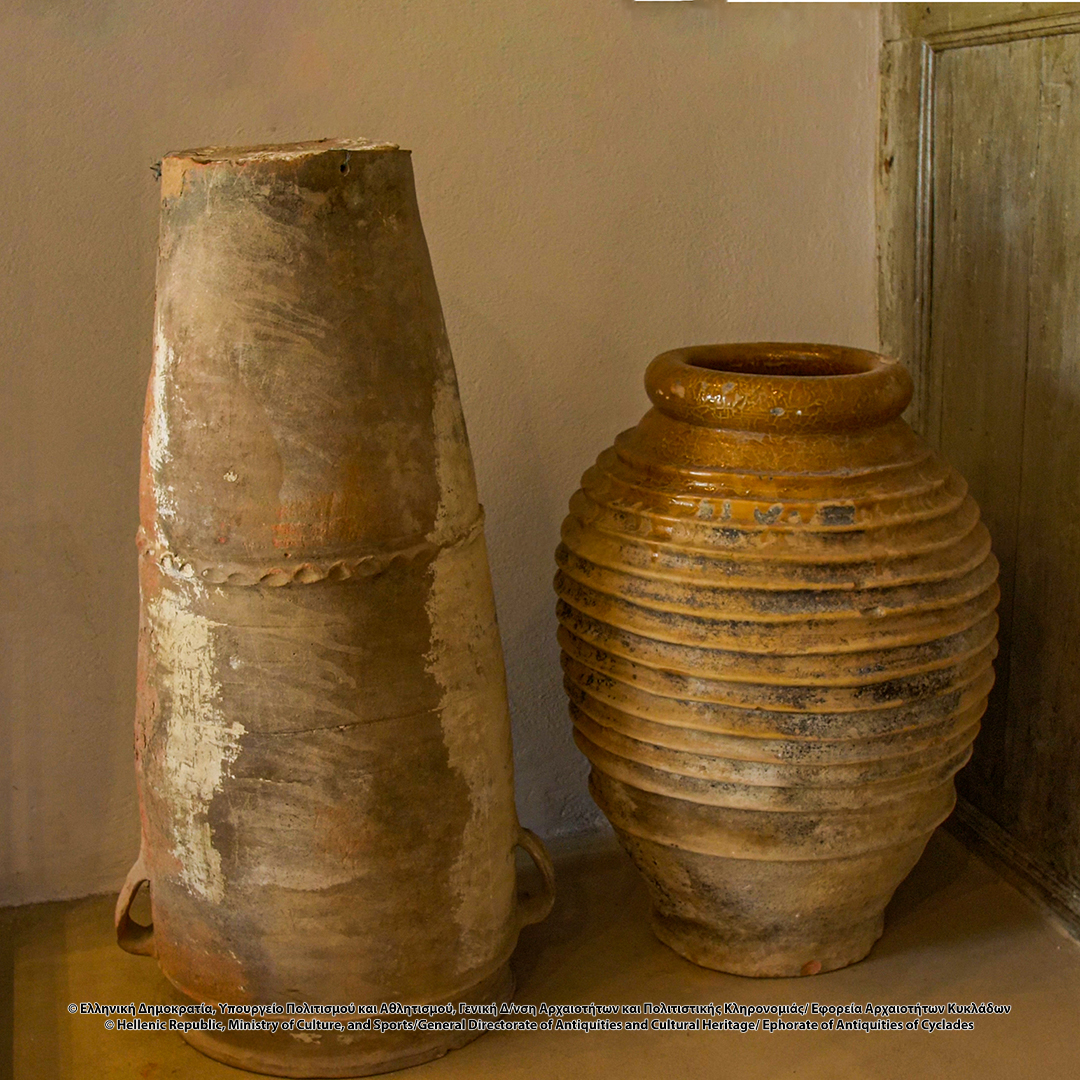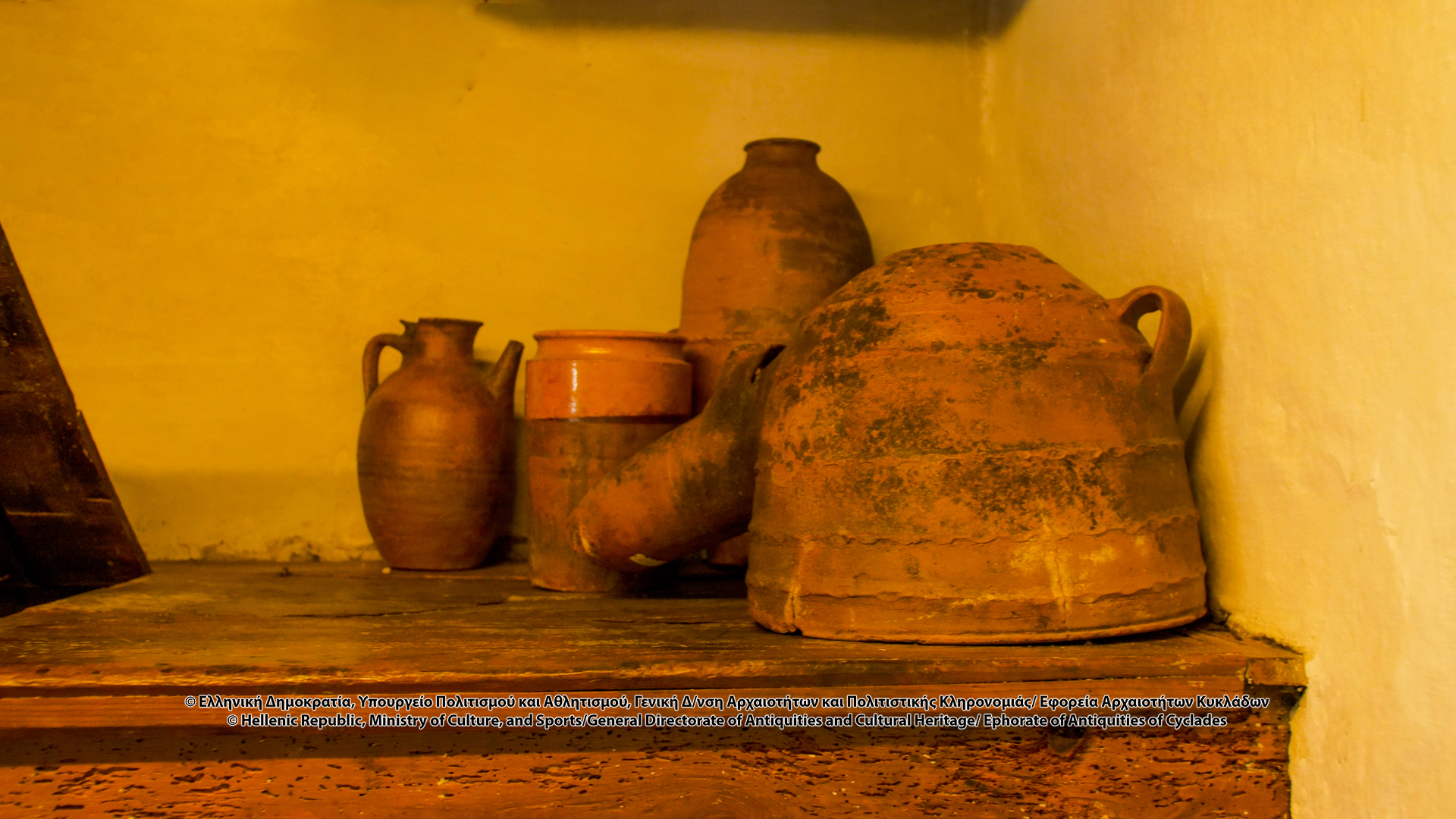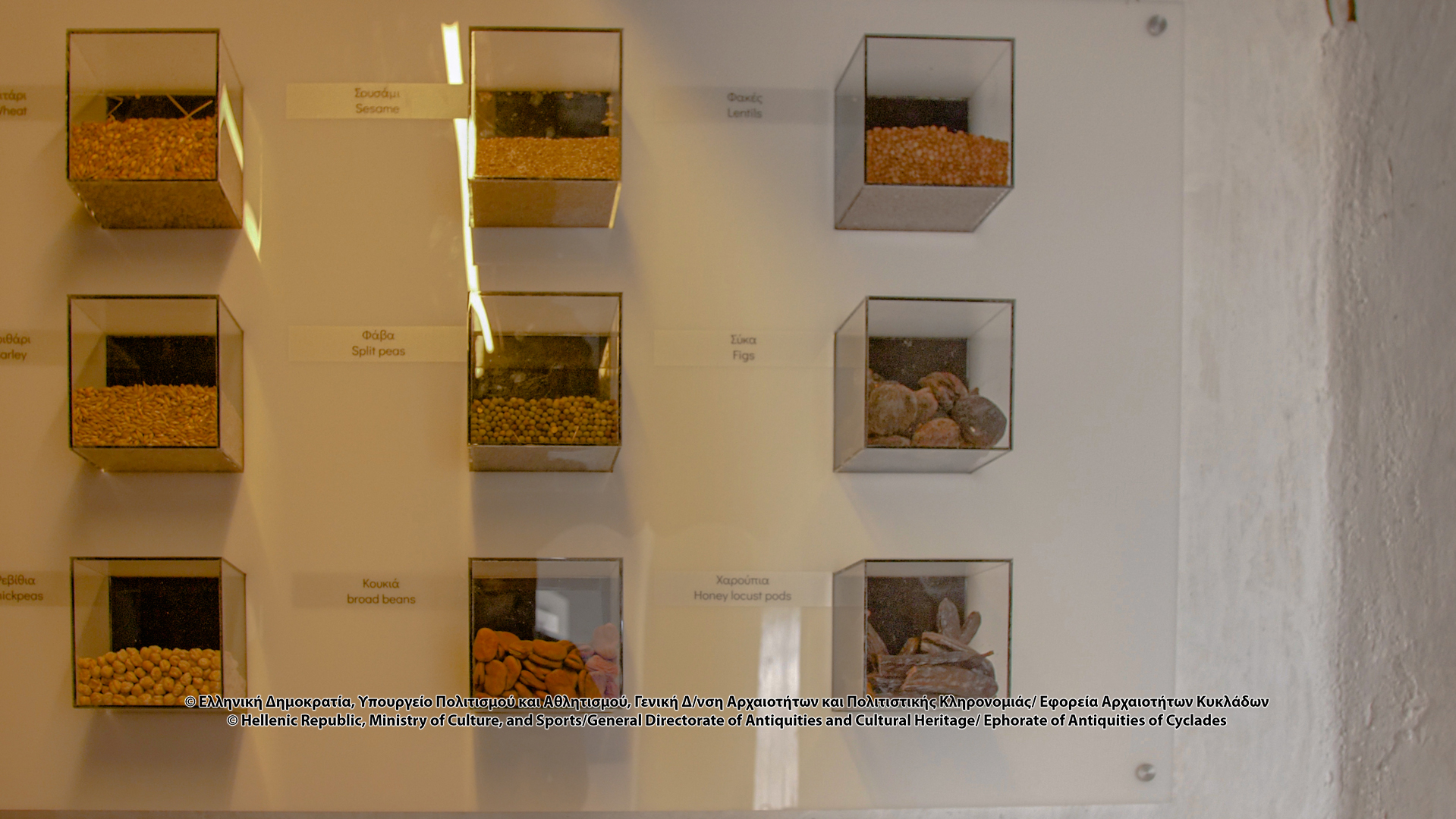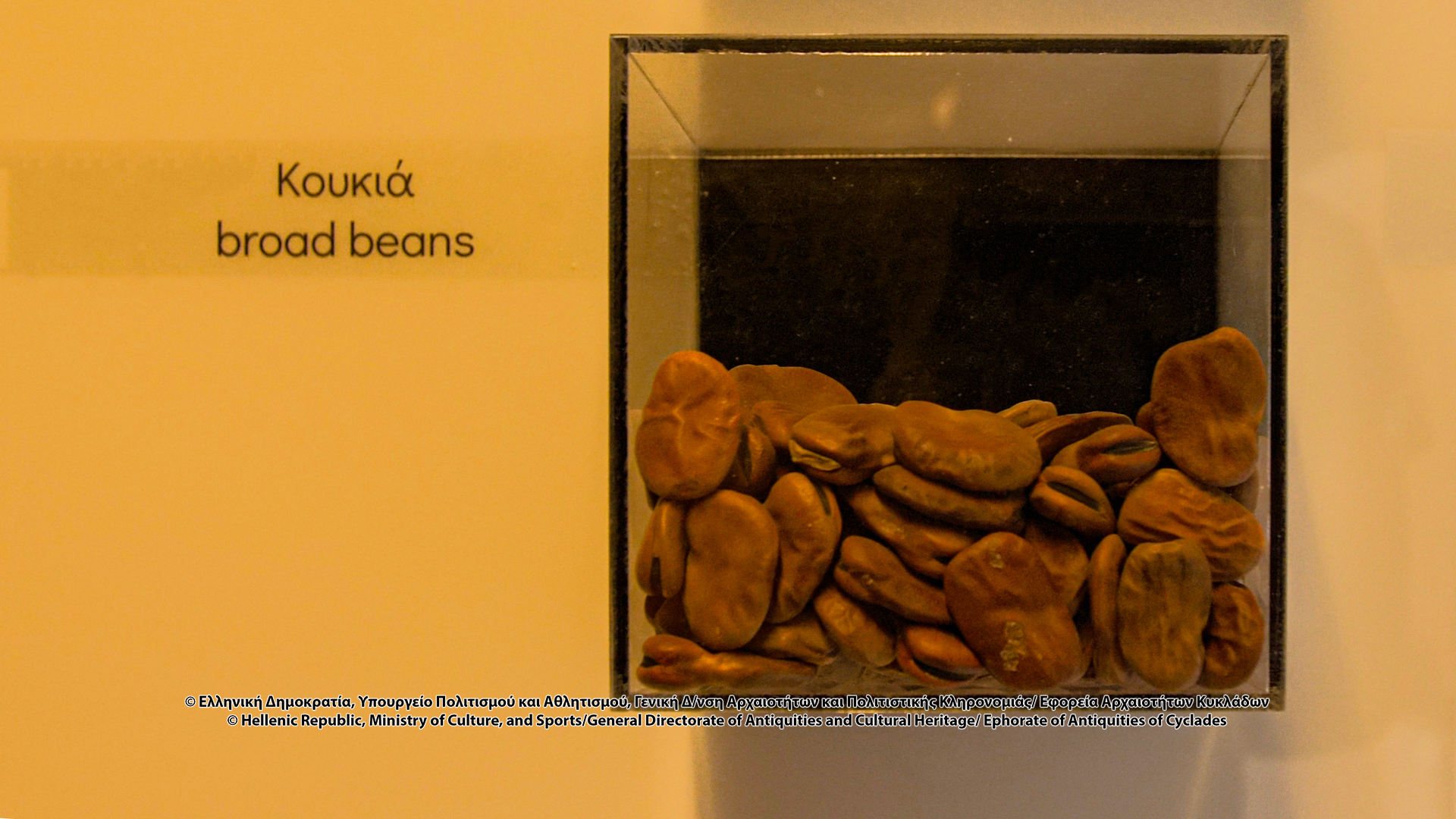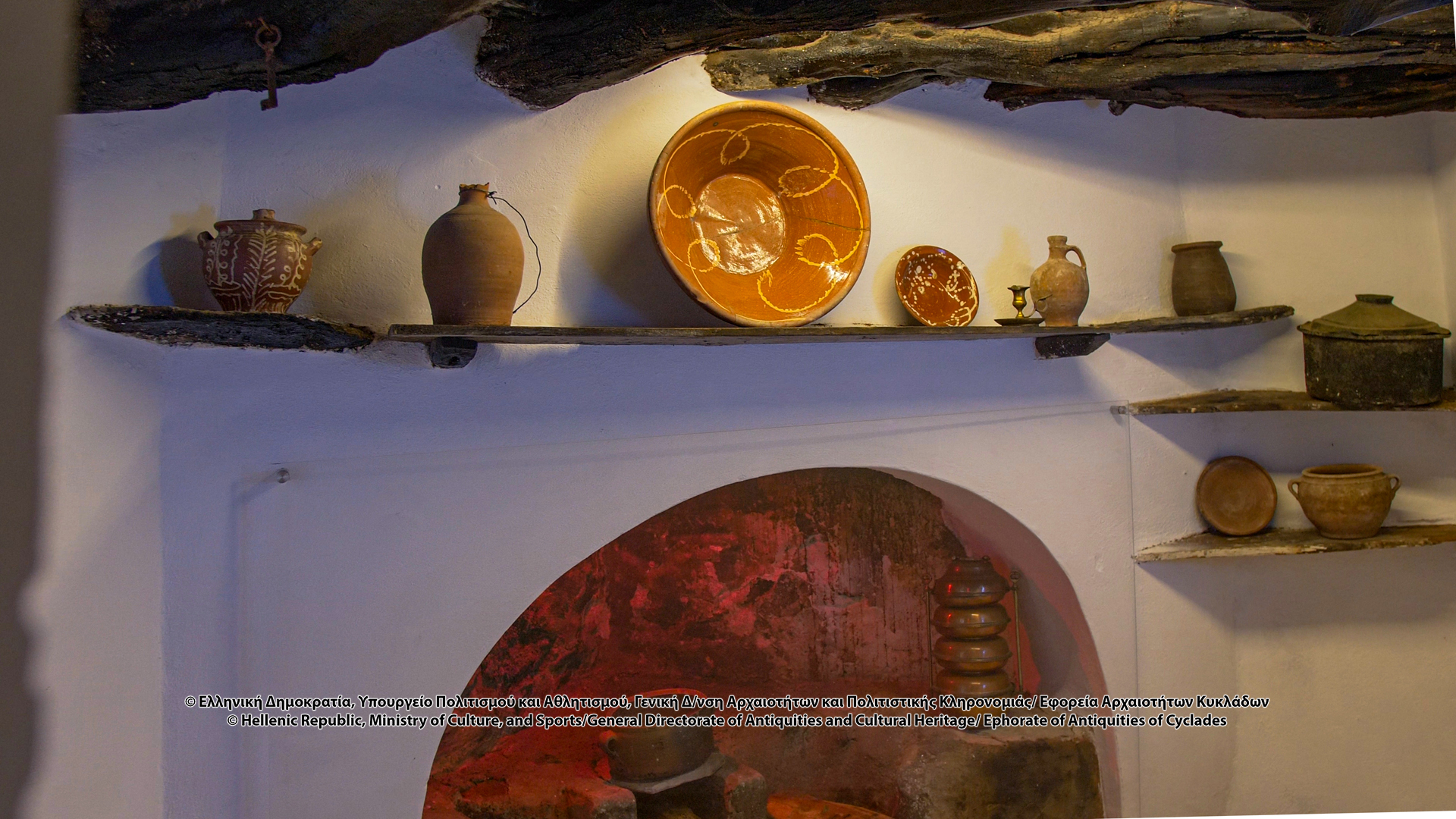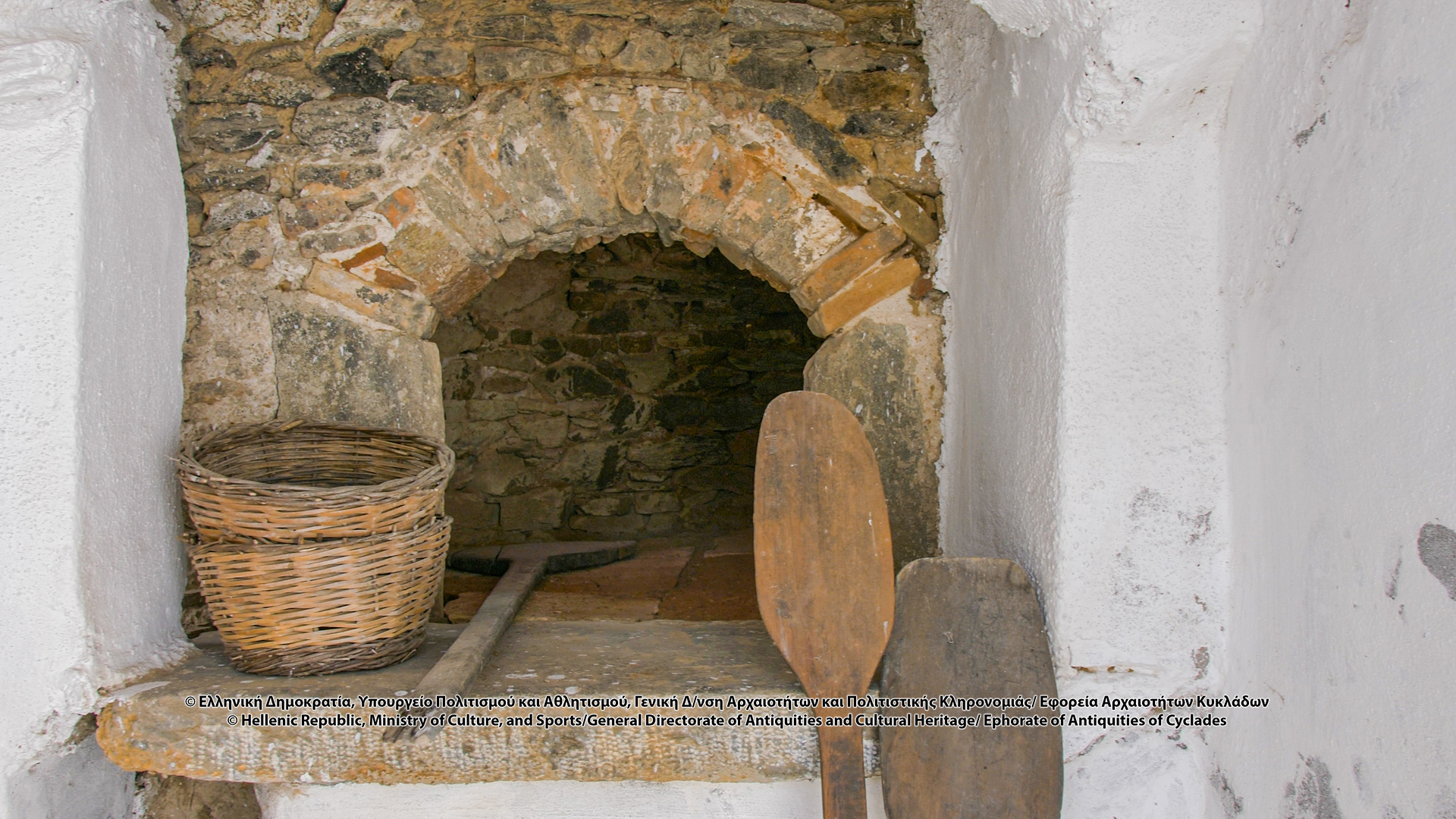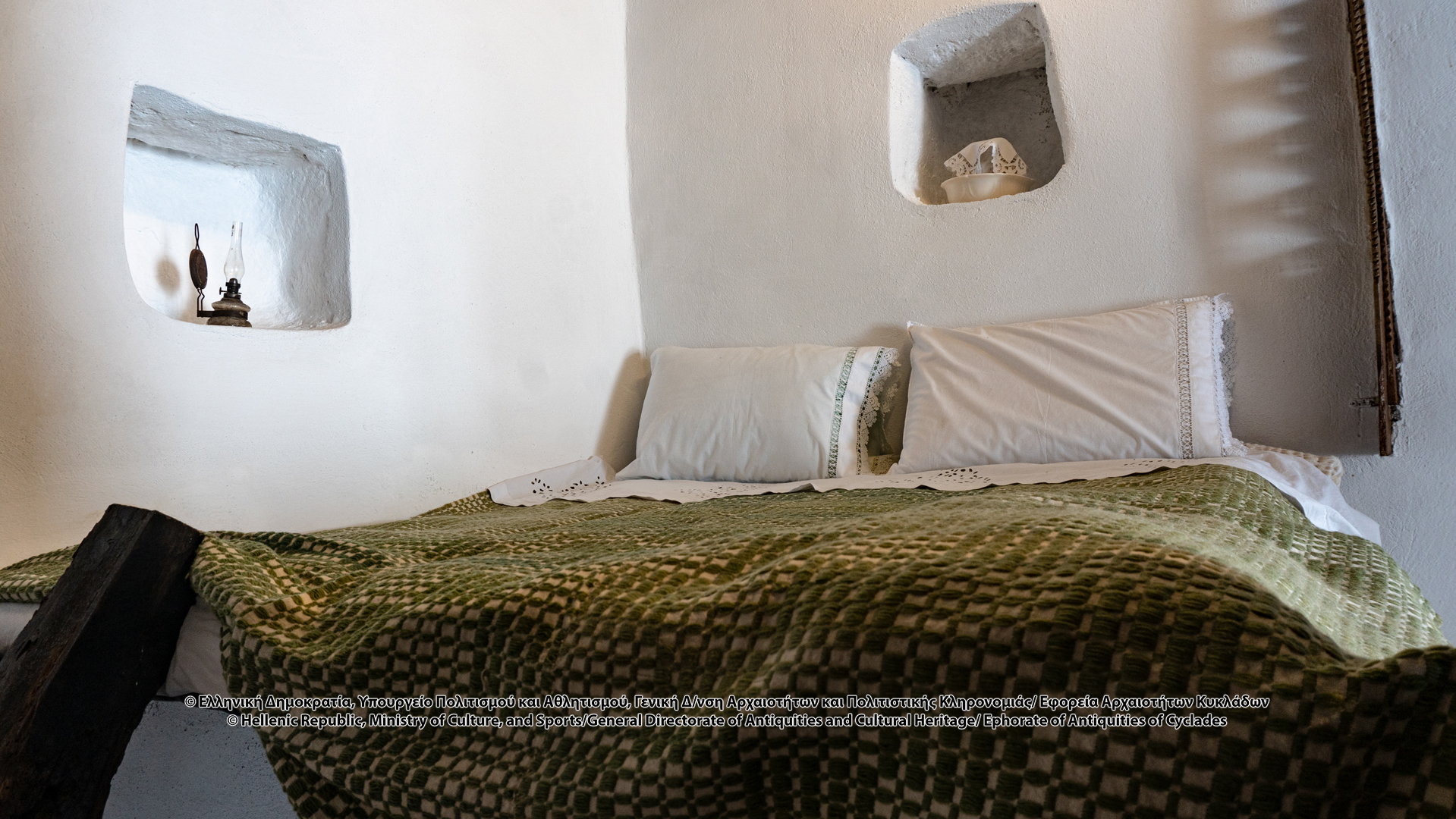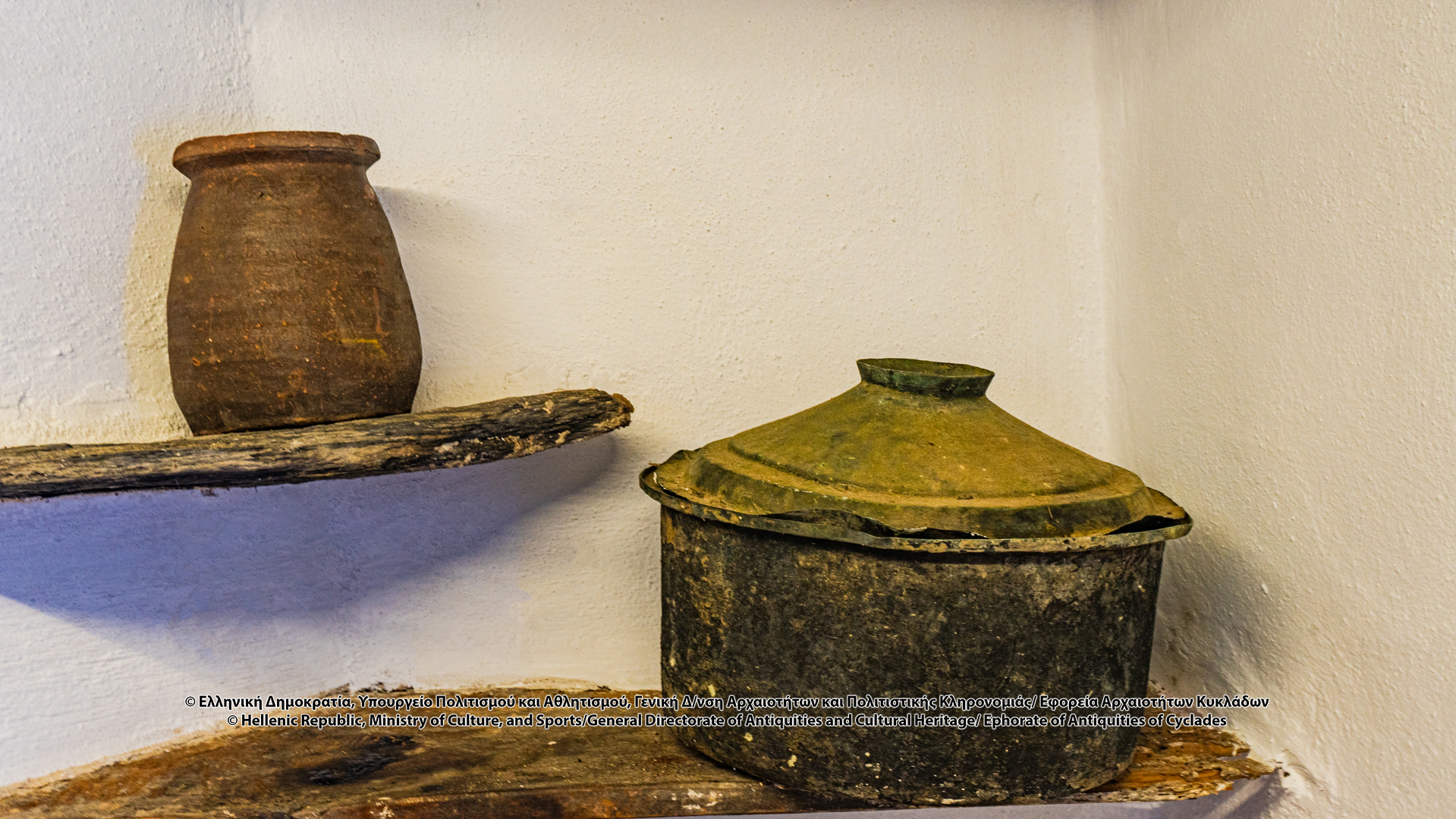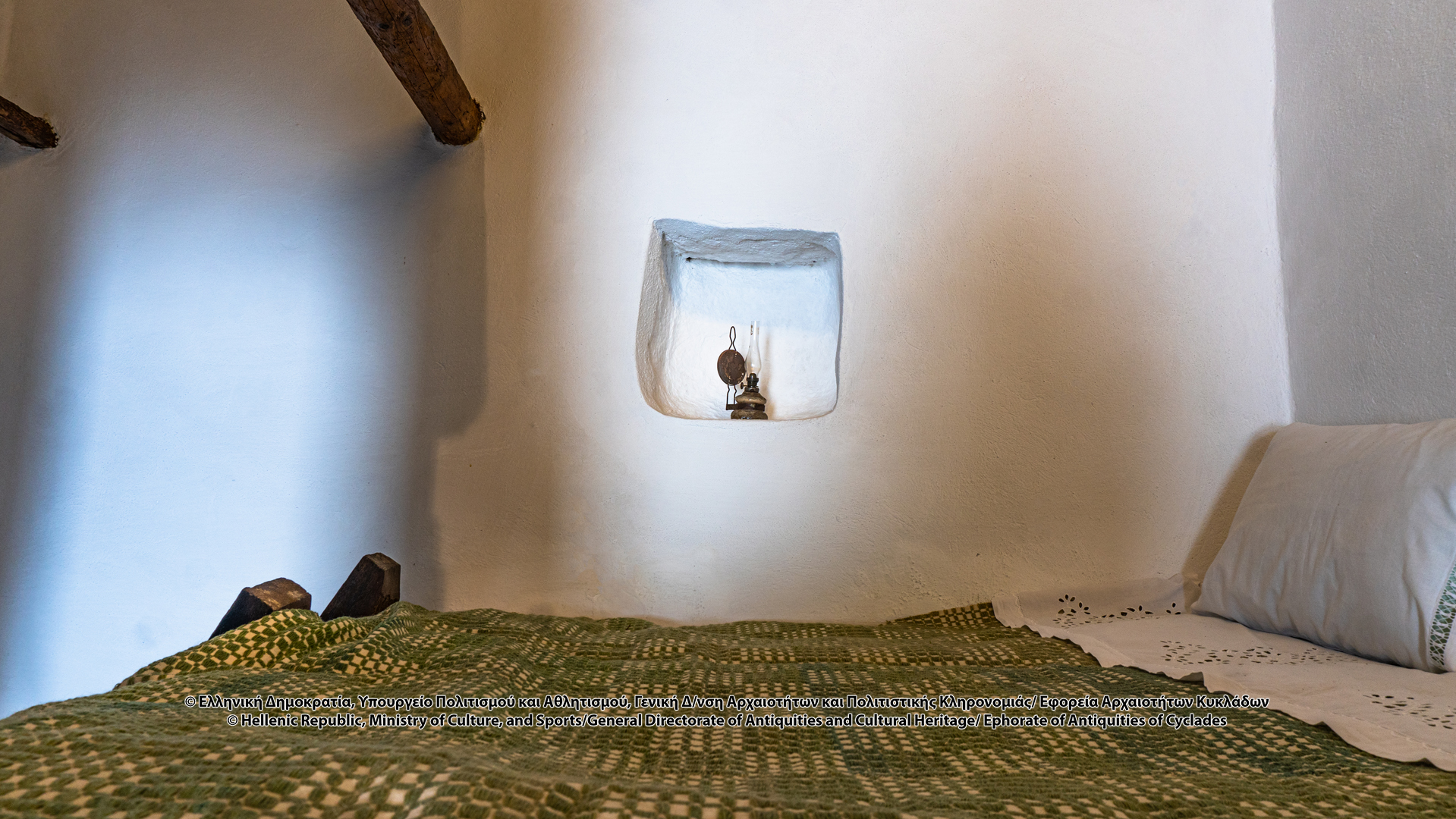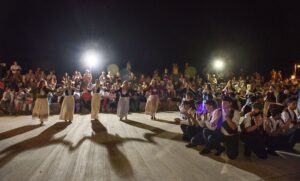The historic house of Passaris in the town of Amorgos, was inhabited by Theodoros Passaris, who fought alongside Konstantinos Kanaris in 1821 for the liberation of Greece. In 1824 he lost his life from a cannon shell, in the Battle of Trikeri in Thessaly. Over the years, the house has continued to provide housing for many generations. Thanks to their care, it has remained almost unchanged until today, being a living icon of the past, an element that determined the choice of this house for housing here of the Folklore Museum of Amorgos, offering the visitor the opportunity to tour a typical house of the late 18th century.
The specific building space in combination with the exhibits, whether they are natural objects or icons and descriptions, contributes to the overall “Amorgian” experience of the wanderer: objects of daily household use, such as pitchers and buckets, tools of agricultural activity, such as shovel, plow, millstone, containers for the collection, transport and storage of fruits, excellent examples of basket weaving, products produced by the land of Amorgos and that are the basis of the diet of its inhabitants, having contributed decisively to their survival in the extremely difficult and adverse conditions of the past, photographs depicting Amorgians of previous generations in their daily lives at home, the field or the pasture.
From ancient times, the main occupations of the island were fishing, agriculture and stock-breeding. As the sea is not always friendly, the Amorgian fishermen learned all about the winds and about when to sail in the open sea without much danger. On land, the inhabitants tamed the rocky place of Amorgos with stepped levels formed with dry stones, in order to create arable land for barley, wheat, katsouni (fava), broad beans, lentils, but also trees such as olives, almonds and fig trees. They learned how to collect herbs, produce honey and raki, raise animals, mainly goats, and produce livestock products.
Emphasis is also placed on characteristic architectural elements of the Amorgian traditional house. From the outside, in an architectural imprint, are given, for example, the underground cisterns for the collection of the extremely rare, in all the islands, water from the roof of the house through gutters. From the inside of the houses some elements in their natural form are exposed, such as the “apokrevatos” (wooden loft bed) with the characteristic layout, suitable to meet the sleeping needs of the whole family, but also for the storage of the crop, which, together with the water supply, are the most valuable assets of the family.
Thus, the visitor acquires the live feeling of a real visit to a typical Amorgian house, enjoying warm hospitality, a characteristic element of the Amorgian people. Among other things, he will be informed about the baking habits of the Amorgians and the built-in oven, necessary in every house on the island, in many cases in use until today, for baking the bread and the dishes of the daily and the festive table. In fact, in honor of St. Paul, on the day of his feast, a special bread is baked with leaven, marked with the position of the slices to be cut, from which rusks are made, the so-called “Pavloi”, while at Easter the traditional “roast of Lambri” is made, which is a goat or lamb stuffed with rice, roasted entrails, dill and rosemary.
The household activities, a key parameter in ensuring the standard of living of the family, confirm the, silent, protagonist role of women in the “economy”, in the literal sense of the word. During the winter months, when farm work is less demanding, the housewife devotes time to textiles and knitting. On the loom of the house, she will weave the clothes, the tablecloths and the “hramia”, that is, the blankets made of sheep wool. Life on the island has a persistent and permanent point of reference of the Orthodox Christian faith. The iconostasis is located in every house to protect the family and to remind the Christian way in the lives of the Amorgians.
The Folklore Museum of Amorgos is the thread that keeps unbroken the continuity of the tradition of the island, emphasizing and preserving the values of the cultural heritage of Amorgos and at the same time making all of us its partakers. The effort to create the Folklore Museum began in the year 2000 by the late Mayor Michalis Kovaios and was continued by the Mayor Mr. Fostieris in collaboration with the Amorgians Association until 2010, while the effort succeeded during the years of Mayor Nikita Roussou, when the building was granted to the Municipality by the Ministry of Culture for the specific use. In recent years, works have continued intensively, ending with the pleasant advancement of the inauguration of the space in 2019. One of the first donors of objects was Father Thomas Synodinos.
The Folklore Museum of Amorgos also organizes audiovisual activities, telling stories, legends and tales of the place, preserving the linguistic idioms of Amorgos, as passed down from generation to generation, thus emphasizing the aspect of their intangible cultural heritage and making the Museum more friendly and appealing to its little guests.
Means of access:
CAR
,
BUS
,
TAXI
,
TRADITIONAL PATH: "Palia Strata" Route
Chora – Monastery of Hozoviotissa- Kapsala – Asfontylitis – Potamos – Cove of Aegiali
Starting Point: "Kalogerikos" Point in the Chora.
,
TRADITIONAL PATH: "Fotodotis" Route
Chora – Milies – Agia Irini – Katapola
Opening hours:
Opening hours are subject to change. Contact with the Municipality of Amorgos is required.
Entry fees:
Free

